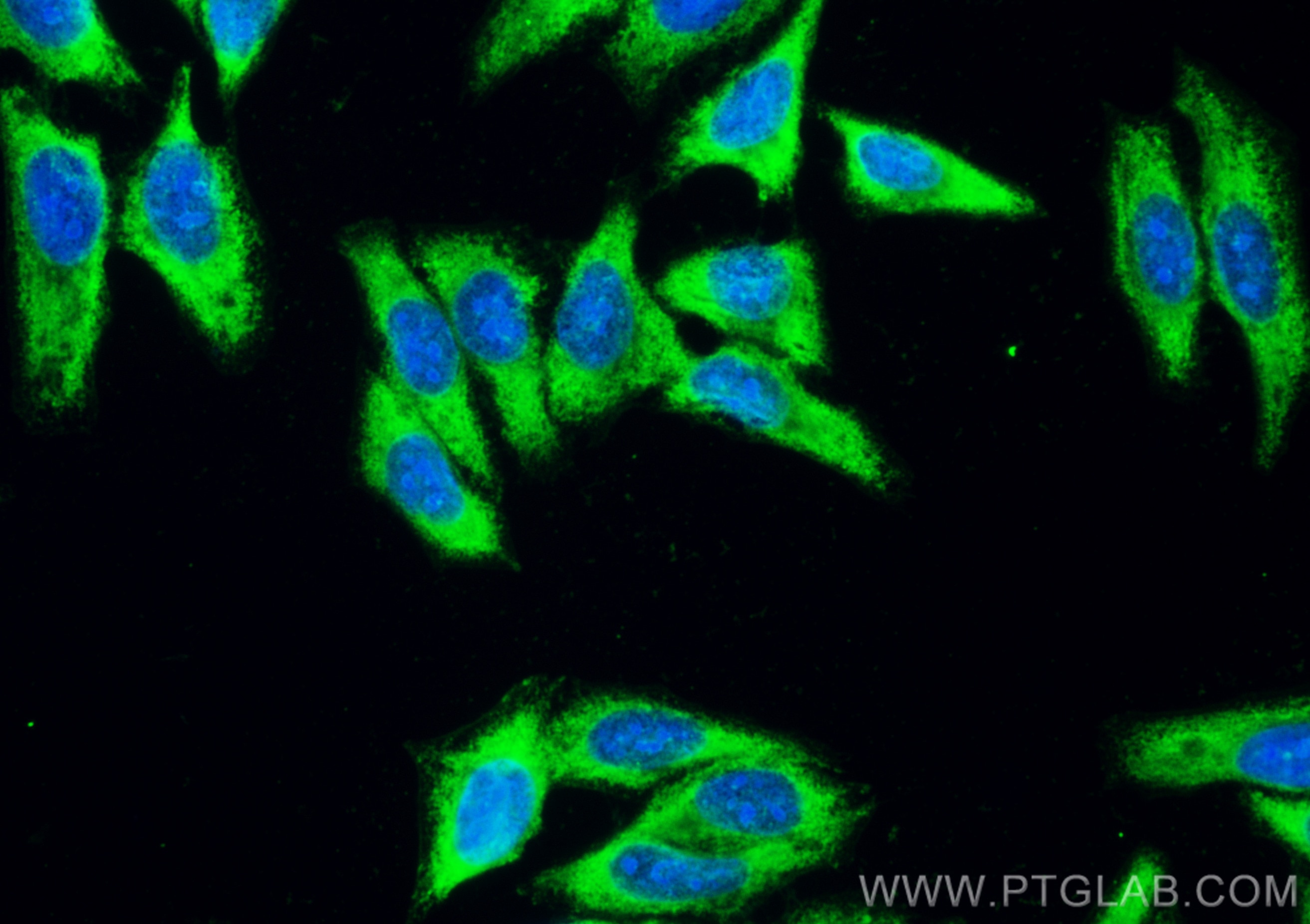CoraLite® Plus 488-conjugated PSAT1 Recombinant antibody
PSAT1 Recombinant Antibody for IF
Host / Isotype
Rabbit / IgG
Reactivity
Human, Mouse, Pig
Applications
IF
Conjugate
CoraLite® Plus 488 Fluorescent Dye
CloneNo.
1O22
Cat no : CL488-81479
Synonyms
Validation Data Gallery
Tested Applications
| Positive IF detected in | HepG2 cells |
Recommended dilution
| Application | Dilution |
|---|---|
| Immunofluorescence (IF) | IF : 1:50-1:500 |
| Sample-dependent, check data in validation data gallery | |
Product Information
CL488-81479 targets PSAT1 in IF applications and shows reactivity with Human, Mouse, Pig samples.
| Tested Reactivity | Human, Mouse, Pig |
| Host / Isotype | Rabbit / IgG |
| Class | Recombinant |
| Type | Antibody |
| Immunogen | PSAT1 fusion protein Ag0776 相同性解析による交差性が予測される生物種 |
| Full Name | phosphoserine aminotransferase 1 |
| Calculated molecular weight | 40 kDa |
| Observed molecular weight | 37-40 kDa |
| GenBank accession number | BC004863 |
| Gene symbol | PSAT1 |
| Gene ID (NCBI) | 29968 |
| Conjugate | CoraLite® Plus 488 Fluorescent Dye |
| Excitation/Emission maxima wavelengths | 493 nm / 522 nm |
| Form | Liquid |
| Purification Method | Protein A purification |
| Storage Buffer | PBS with 50% Glycerol, 0.05% Proclin300, 0.5% BSA, pH 7.3. |
| Storage Conditions | Store at -20°C. Avoid exposure to light. Stable for one year after shipment. Aliquoting is unnecessary for -20oC storage. |
Background Information
PSAT1, also named as PSA and PSAT, belongs to the class-V pyridoxal-phosphate-dependent aminotransferase family and SerC subfamily. It catalyzes the reversible conversion of 3-phosphohydroxypyruvate to phosphoserine and of 3-hydroxy-2-oxo-4-phosphonooxybutanoate to phosphohydroxythreonine. PSAT1 represents a new interesting target for CRC therapy. It may be implicated in altered serine metabolism and schizophrenia spectrum conditions. (PMID: 18221502, 20955740)
Protocols
| Product Specific Protocols | |
|---|---|
| IF protocol for CL Plus 488 PSAT1 antibody CL488-81479 | Download protocol |
| Standard Protocols | |
|---|---|
| Click here to view our Standard Protocols |


